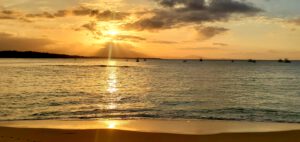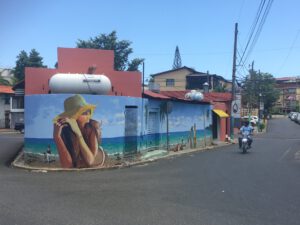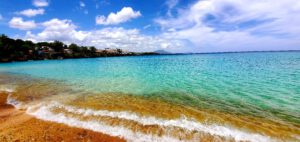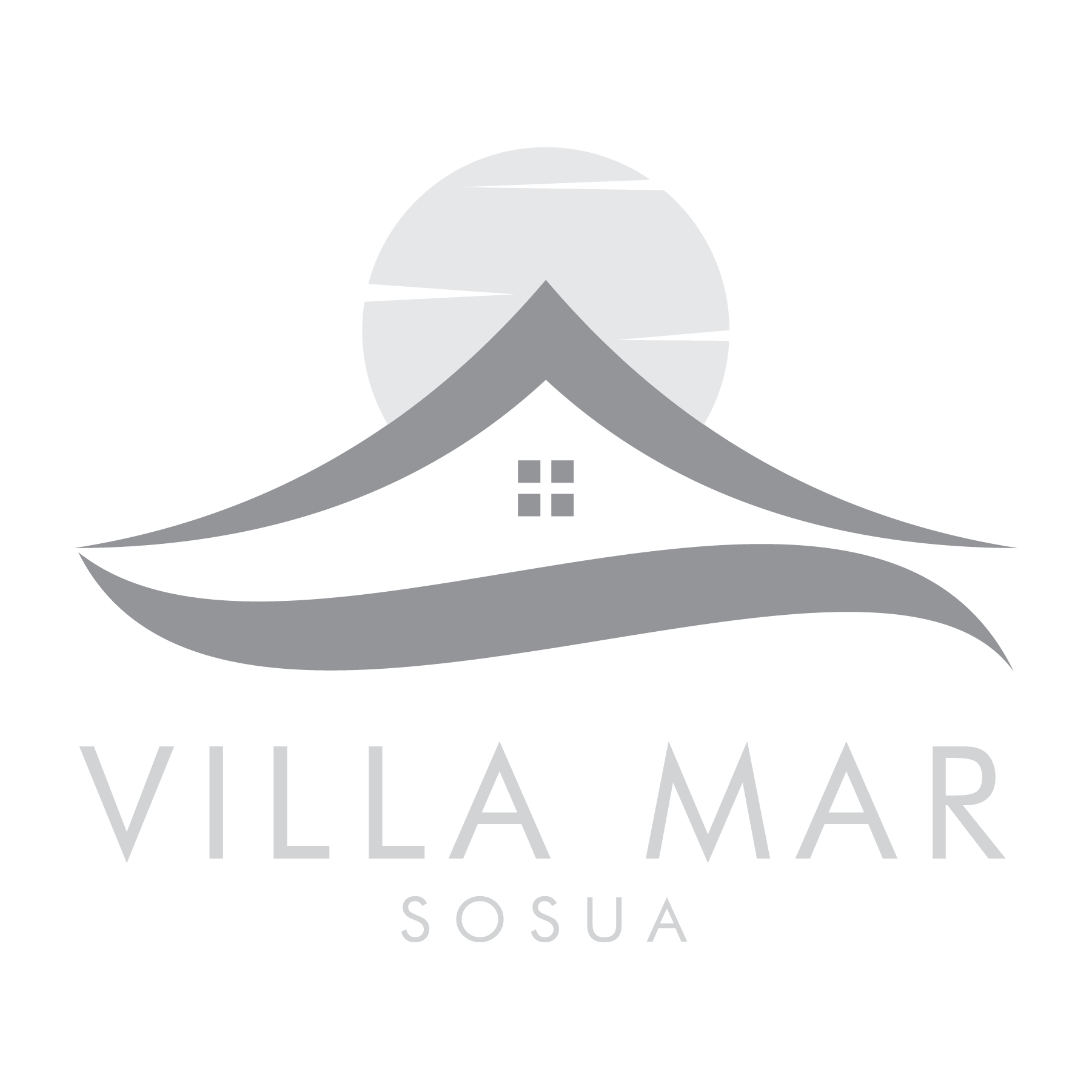
Sosúa is situated 18 miles east of Puerto Plata on the Atlantic coast.
In the thirties Sosúa consisted of only a few huts. In a 32 nations meeting in the year of 1938 Trujillo agreed to take in Jewish refugees from Europe. The majority of those Jews arrived in Puerto Plata in 1939 from Germany and Austria. Most of them were single men, because one of Trujillo’s conditions had been that only 10% of the refugees could be married. His intention was to “Lighten” his mulatto population. Available land was cleared and put to agricultural use and cattle breeding. But after a short while it turned out that the soil wasn’t really suitable for this purpose. That fact and also that all the different immigrants lived together in a community led to tensions, and many of the ex-pat Jews left the country for the United States after only a few years. Those that had stayed behind reorganised themselves and started co-operatives for breeding cattle and the manufacturing of dairy products. The first butter and cheese was turned out in Walter Biller’s kitchen. It later became a company that produces sausages, delicatessen and dairy products of high quality and distributes them nationwide.

Of all the Jews that immigrated here, these days there are only a handful of families left in Sosúa and its surroundings. What was once a small village, founded by Haitians and Cubans on Rio Sosúa has turned into one of the main tourist centres on the Atlantic coast. The town that lies on the bay of Sosúa consists of two parts: Los Charamicos to the west and El Batey to the east.
El Batey is completely reliant on tourism, hotels restaurants, shops and discos form part of the picture. The incredible influx of European tourists has led to a big boom in building. Many Germans, Austrians and Americans have settled in Sosúa and run hotels, restaurants and travel agents here. German food, German bakers and butchers, even German speaking waiters right down to the Austrian restaurant, you’ll find it all in Sosúa, but there are plenty of English speaking places too, so you will feel right “at home” here.
Dominicans make a living in tourism as souvenir vendors, taxi drivers and are in on many other business ventures. Prices in Sosúa are amongst the highest in the country. Some shops and restaurants even charge different prices for Dominicans than they do for tourists. Sun worshippers can enjoy the mile-long beach that links the two parts of Sosúa. Looking out from there, on the horizon you will see Pico Isabel de Torres, which is shrouded in clouds most of the time.
The synagogue in Calle Alejo Martínez is definitely worth a visit. The Jewish inhabitants meet in the simple, unpresumptuous building for Friday prayers, but other confessions are welcome.
A speciality of Sosúa are it’s glass bottom boats. They leave from the beach and go out onto the bay. They allow an insight into the underwater flora and fauna. Half an hour’s trip will cost you around 400RD$.
In Los Charamicos you can really experience Dominican daily life:
- Patron Saint: San Antonio
- Patron’s day: 13th August
Car Rental:
Ok Motors, German owner
If you rent a car with him, you can return the car at the airport ,so no additional transfer service bills or taxi needed.

